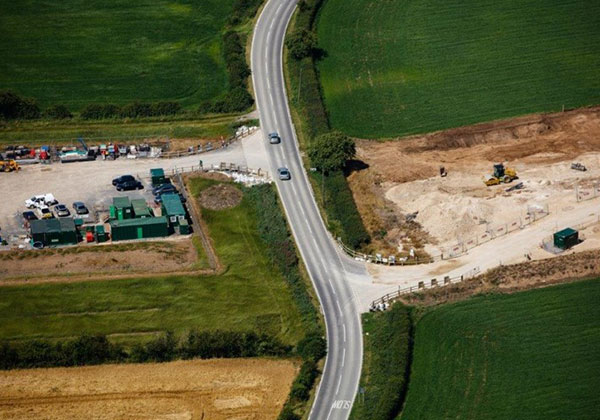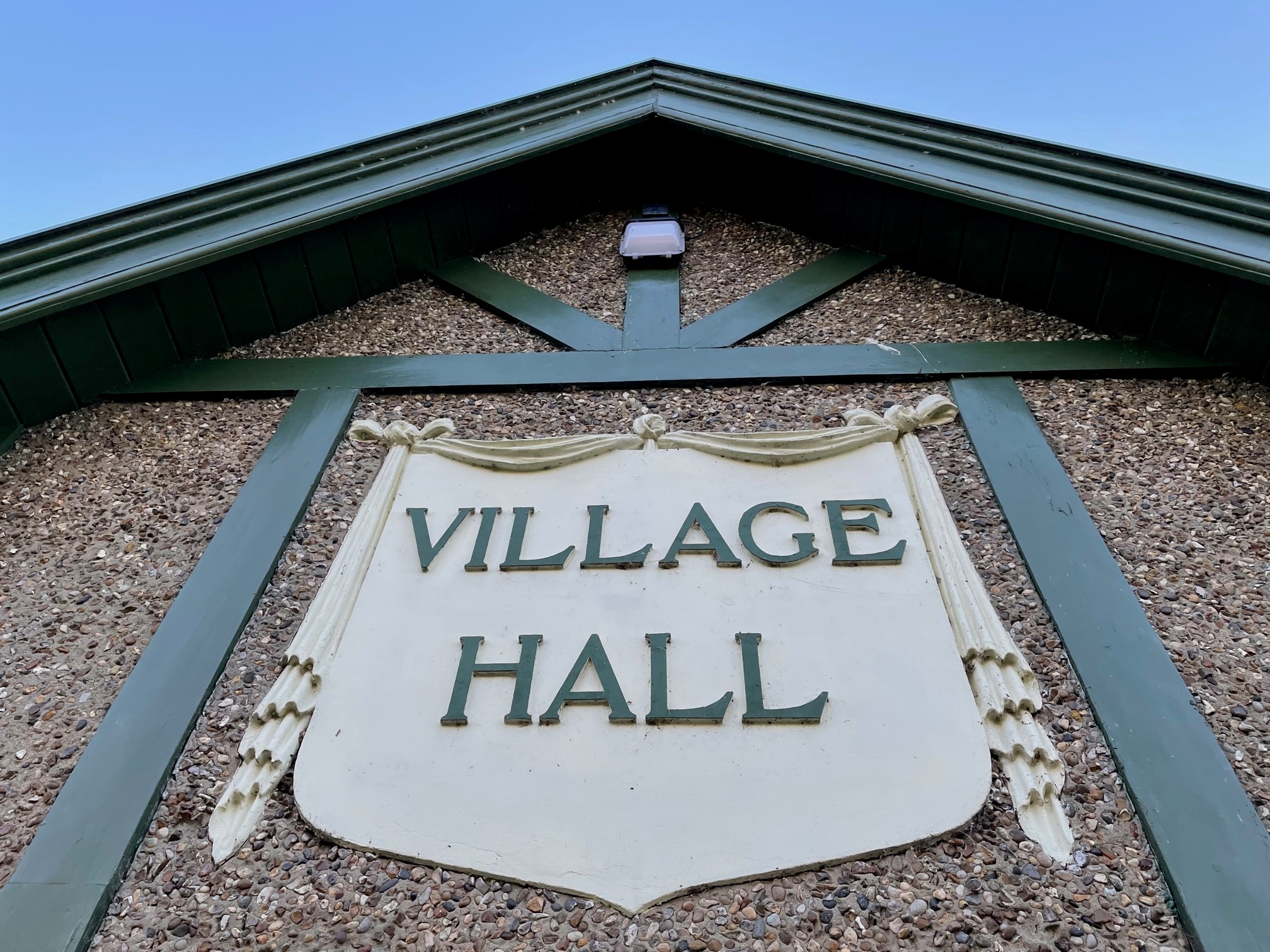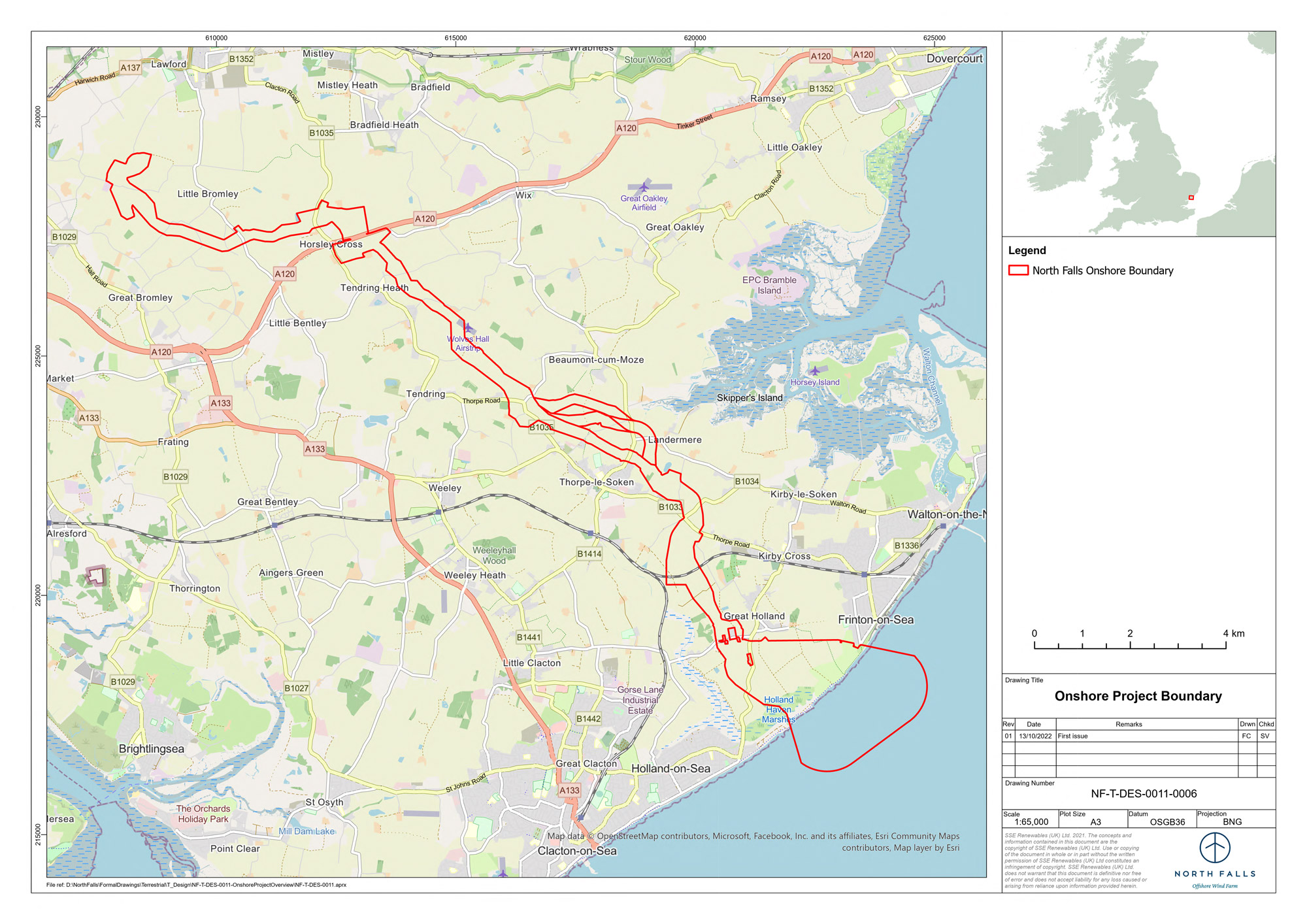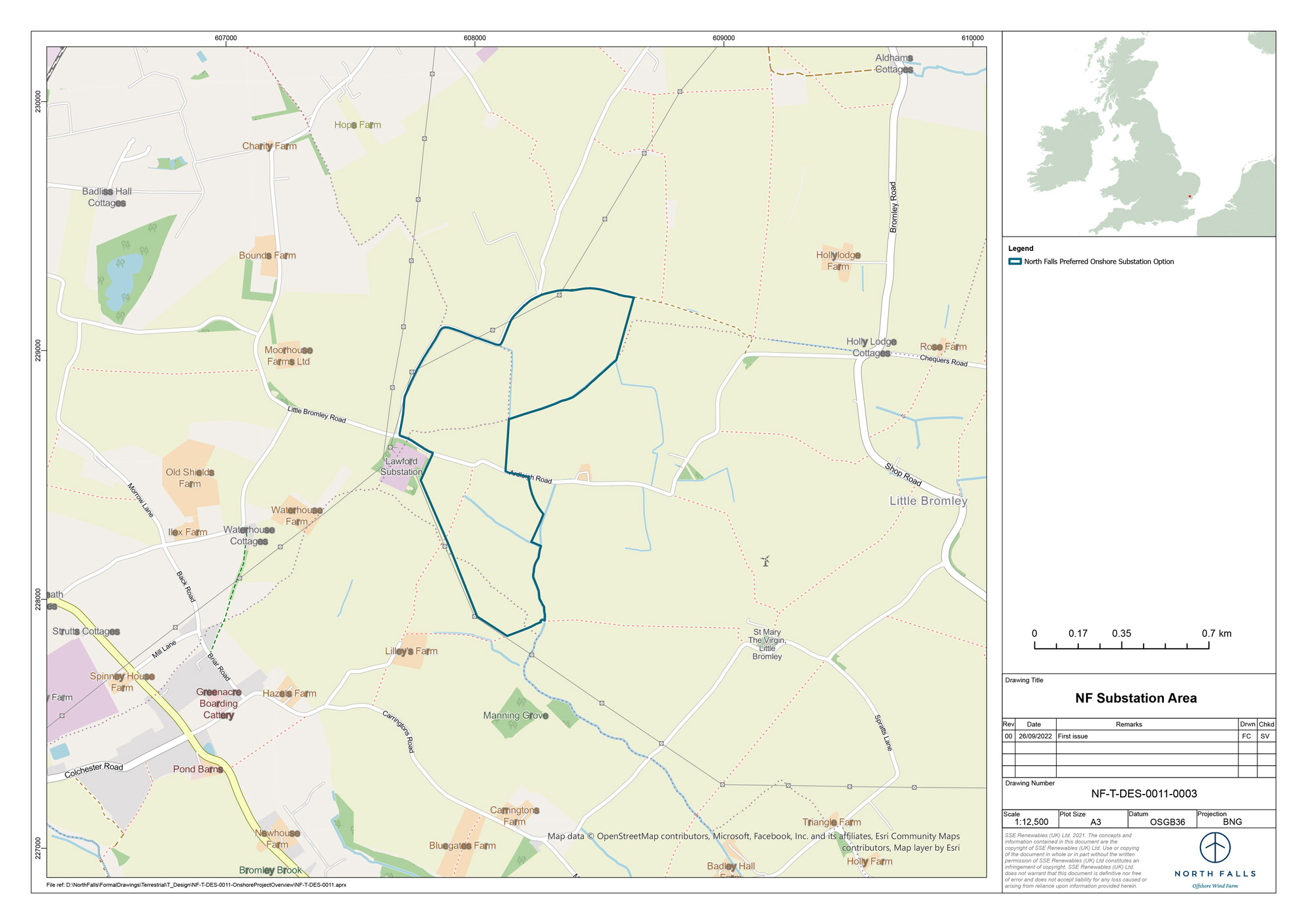The information on this page was correct at the time of publishing (December 2022). The project has since evolved and we would encourage you to read our September update for more information.
North Falls: onshore
Onshore description
Onshore, North Falls will comprise underground cables carrying the power from the landfall to a new onshore substation, which will transform the electricity so it can enter the national grid via another substation to be constructed by National Grid. From here it will be delivered to the end users: homes, businesses and industry.
Video fly-through of the onshore cable route
Onshore project area
Since our previous consultation when we did not have a confirmed grid connection location, National Grid has provided North Falls with a location which has enabled us to narrow down our original scoping area to an onshore project area. This area includes the temporary works footprint for the cable landfall, onshore export cables and associated works as well as for the project's onshore substation. The onshore project area lies entirely within Tendring, Essex.
The area was identified through a site selection process which included filtering out broad constraints such as designated habitats and sites of importance for nature conservation, ancient woodlands and historic landscapes while employing design assumptions and undertaking consultation with technical stakeholders.
The subsequent onshore scoping area is approximately 150km2 and located within the Tendring District of Essex. It extends from the coast, between Clacton-on-Sea and Frinton-on-Sea, approximately 20km inland.
Our ongoing site selection activity will look within this broad onshore scoping area to identify specific locations for each elements of the onshore electrical infrastructure required for North Falls. Future consultations will present the outcome of this work and offer opportunities to input into the proposed locations.
Onshore cable corridor
The onshore cable corridor is where buried export cables would be installed to transmit the electricity generated by the wind farm from landfall to the project's onshore substation. Further buried cables would connect that substation to the National Grid connection point.
The corridor runs approximately 22km inland from Great Holland on a roughly north-west alignment towards Little Bromley via Landermere, Tendring Green and Horsley Cross. The Tendring Brook is crossed to the north-east of Tendring and the Holland Brook to the north-west of Horsley Cross.
24km
Underground cables total length
Around 1.8m
Cables installed below ground level
1
Onshore substation
3-8 hectares
Area of substation
18m
Maximum height of substation equipment
8
Number of horizontal directional drills
Onshore cable construction
All onshore cables will be buried and once their construction is completed, the land along the route will be returned to landowners to use as they would have previously.
The construction works will comprise duct installation using a combination of 'open cut' trench excavation and trenchless techniques such as horizontal directional drilling (HDD) at crossings such as roads, rivers and designated sites. Once the ducts are installed, the cables would be pulled through them and joined within joint bays located along the onshore cable corridor. To facilitate construction, temporary facilities would be required including construction accesses, up to seven temporary construction compounds and HDD compounds.
The cables would be laid in up to 16 trenches, within a temporary working width of up to 60m wide, or up to 110m where HDD is used. Cables would be installed approximately 1.8m below ground level, and cables would typically be 200mm in diameter.
Feedback Questions
Again half of the respondents were happy with the proposed methodologies and had limited feedback other than to be comfortable with horizontal-directional drilling as a process and relieved that the cables would be buried for their full length. In terms of concerns with the proposed methodologies, the main issues were around the impact on the farmland and countryside during construction, closure of any footpaths or bridleways and also any potential noise or other pollution. There was also a comment around any longer-term impacts on agricultural land into the future.
Before

During

After

Example of cable route construction from a previous project (Triton Knoll)
Onshore substation
North Falls will require an onshore substation for all the electrical equipment required to connect the project to the national grid. This will include electrical transformers, air / gas insulated switchgear, control and storage buildings, and other ancillary equipment. The onshore substation will also include drainage and access infrastructure, and extensive landscaping such as bunds, and woodland and hedgerow planting.
Feedback Questions
Respondents not living in the area close to the proposed substation location did not tend to comment on either the location or surrounding area as they were either unfamiliar with the area or had no issues/felt it looked reasonable. Those who did comment were concerned it was not a suitable location for electrical infrastructure and felt it would add negatively to the existing 'wirescape'.
Onshore substation zone
The North Falls onshore substation would be located in an area we have called the 'onshore substation zone', located east of the village of Ardleigh and west of Little Bromley. Land heights in this zone vary from 35m Ordnance Datum (OD) around the onshore substation zone to 5m around the Holland Brook, adjacent to the coast. The footprint of the substation and its construction compounds will be located within this zone.
Onshore substation construction
Construction at the substation will start with stripping the topsoil then creating access points, temporary haul roads and the works compound. Earthworks will be required to create a substation platform and there may be piling (if required) before concrete is poured for the substation platform. Once the platform is completed, the electrical equipment will be installed along with drainage infrastructure. Finally, there will be reinstatement and landscaping including screening vegetation.
Offshore grid connection
North Falls continues to work towards the fact that the project's grid connection will be the one provided by National Grid in Tendring, Essex, part of the East Anglia GREEN project. However, it should be noted that had an alternative grid connection solution been offered, for example offshore, infrastructure on land would still be required to transmit the electricity produced to the national grid for use by customers.

Feedback Questions
This question received some very specific and useful responses that included suggestions around: replacing a cast-iron water main; ensuring a known dormice hedge route remains undisturbed and not blocking, diverting or impacting a specific drainage ditch. There were further calls for coordination with the Five Estuaries project in terms of utilising the same route and for reduced impacts on agricultural land.
There were questions around why the existing regulations mean an offshore grid connection is not feasible, which relates to current government legislation and planning regulations that are under review as part of Offshore Transmission Network Review. While most did not answer this question, the responses from those who did were primarily positive to the concept providing it did not impact marine life or create too much offshore infrastructure or create offshore restriction zones.
Biodiversity net gain
The Environment Act 2021 includes a condition mandating a minimum of 10% biodiversity net gain for all developments including nationally significant infrastructure projects such as North Falls. Developers will be required to leave the natural environment in a better state than it was before. The biodiversity net gain process includes specific and measurable actions and outcomes to be undertaken throughout the project lifecycle. This ranges from collecting baseline data for assessment through to calculating biodiversity gains and losses from the project's development. The intention is to deliver demonstrable and quantifiable benefits to biodiversity that will apply to all habitats within the onshore project area.
North Falls will work with statutory bodies and other groups to develop biodiversity net gain proposals, with relevant progress to be included in the Preliminary Environmental Information Report which will be subject to consultation next year.


